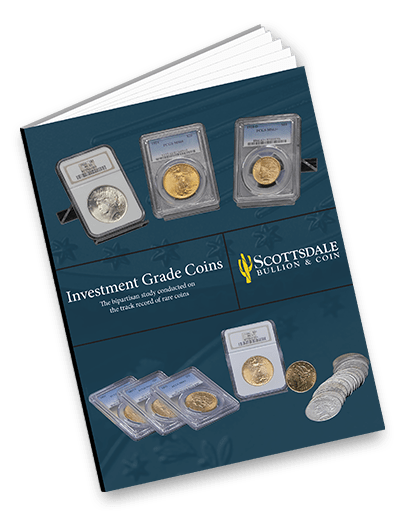This week’s Gold Spot highlighted how the current dip in gold prices provides the perfect dollar cost averaging investment opportunity now for gold bullion buyers. We expanded upon the dismal state of the economy, how the Fed continues to feed us lies, and why it’s time to forget about the noise and focus on your investments.
In the Gold Spot Overtime video above, we go into greater depth about the dollar cost averaging strategy that has helped Scottsdale Bullion & Coin secure maximal returns on precious metal investments for clients over time. This strategy has a proven track record of helping both retail and institutional investors see optimized gains in the market.
What is Dollar Cost Averaging?
Dollar cost averaging (DCA) is an investment strategy developed by famed economist Benjamin Graham, author of the staple investment book The Intelligent Investor. Graham wrote this theory to help investors catch the dips in the market to offset investments made at higher prices. Thus, reducing the average cost of their holdings.
In summary, the DCA strategy is all about taking advantage of downturns in an asset’s price to reduce the average cost in your portfolio. It’s a simple and highly effective approach that’s easy to ignore in favor of more elaborate investment schemes. Sometimes, it’s the basics that produce the greatest results over time.
Why DCA Works for Precious Metals Investing
SBC has helped its clients benefit from the DCA approach by carefully monitoring precious metals markets and investing strategically when there are temporary dips. Currently, both gold bullion coins and gold bars are experiencing corrections following relative gold spot price highs. There are a few key events to which these short-term dips can be attributed.
Currently, the fiat currency markets around the world are devaluing at rapid rates. This has resulted in a short-lived boom in the greenback’s strength as its reserve-currency status makes it the cleanest shirt in a dirty laundry basket.
Another contributing factor to bullion’s correction is the manipulation by institutional investors. Banks seem to play a role in every short position within the ETF and futures contracts market which influences bullion prices. In fact, JP Morgan is in the hot seat yet again for doing just that.
What Does DCA Look Like?
Bullion Market
The theory behind DCA is straightforward and easy to understand, but it’s important to understand how this plays out in reality. Let’s say you purchased some gold bullion in March of 2022 at a price of $2,040/oz. Then, gold prices dropped to $1,740/oz. This represents a perfect DCA opportunity to bring down the average price of your investment.
In this case, your first purchase at $2,040 plus your second investment at $1,740 combine for a $3,780 total investment. When divided by the two purchases, it comes out to a $1,890 average investment. This represents a significant reduction in the average of your bullion investments which translates into greater gains when gold prices increase in the future.
Investment-Grade Coin Market
Investment grade coin investors haven’t seen as much price volatility as their bullion-investing counterparts. As discussed in our previous Overtime video, there’s a big difference between the price action in the numismatic and bullion market. Investment grade coins are seeing a slight correction still making it a good opportunity for DCA to average down the investment cost.
Bullion investors who are looking for a way to escape the volatility of the bullion market without having to worry about strategic DCA should consider the relatively stable numismatic coin market. Both markets are expected to perform well as inflation continues to skyrocket and economic conditions worsen across the board.
Get All Your Gold Investment Questions Answered
Interested in learning more about different precious metals markets, gold and silver investments, and how you can protect your wealth against inflation, the experts at SBC Gold are happy to assist. Feel free to call us or live chat with us to learn more.


